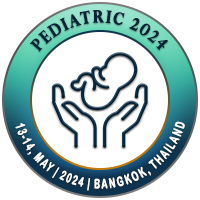
Fernando Alejandro C Ligot
University of the Philippines, PhilippinesTitle: A qualitative study on the feeding methods of Filipino mothers of children with cleft lip and palate aged 0 to 24 months: A pilot study
Abstract
Background: One of the initial problems that children born with cleft lip and palate encounter is their difficulty in feeding. This affects the child’s nutritional needs and the timing of the surgical intervention. Information on the appropriate feeding methods for children with cleft lip and palate will enable mothers to feed their babies properly and facilitates the implementation of appropriate interventions. The study was funded by the National Institutes of Health of the University of the Philippines Manila.
Objectives: The study described the feeding problems experienced by children with cleft lip and palate (CLP) and cleft palate (CP) ages 0-24 months, the feeding methods most preferred by Filipino mothers, which methods they found most useful, and the mother’s reactions to the feeding issues their children face.
Methods: The research is a pilot study which used a qualitative cross sectional descriptive mixed method design. Thirty-two (32) mothers of children with cleft lip and palate and cleft palate answered an 11-item online survey and focused interviews from January to June 2022. Inferential statistics was used specifically frequency distribution to describe the data and Fischers’ Exact Test and Pearson’s Ci-Square Tests were used to analyze the data quantitatively to determine significant association between variables identified.
Results: Results showed that the feeding problems encountered by the children included, nasal regurgitation, sucking, aspiration of liquids, latching on nipples and swallowing. Mothers preferred to use, regular feeding bottles (24.3%), specialized feeding bottles for children with cleft (21.6%), breast feeding and dropper (17.6%), syringe (9/5%), cup (6.8%) and spoon feeding 2.7%) methods. But they also mentioned that they found the following feeding methods to be the most useful, regular feeding bottles (32.7%), specialized feeding bottles for cleft (23.1%), breast feeding (11.5%), spoon and dropper feeding (7.7%) and syringe feeding (1/9%).
Conclusion: The feeding problems experienced by Filipino children with CLP and CP mirrors those that have been reported in others studies. Filipino mothers still prefer to use traditional regular feeding bottles in feeding their babies and found this to be most useful. Maternal reactions of the participants to the cleft condition and its feeding issues are similar to reported studies in other countries. The internet has been the primary source of information on cleft and feeding of the participants in the study.
Biography
Fernando Alejandro C Ligot is a Filipino speech-language pathologist. He has been an associate professor at the University of the Philippines Manila, Department of Speech Pathology for 33 years. A volunteer of Operation Smile Philippines since 2000 and a speech pathology education consultant of Operation Smile International. He has a master’s degree in Health Profession Education.

